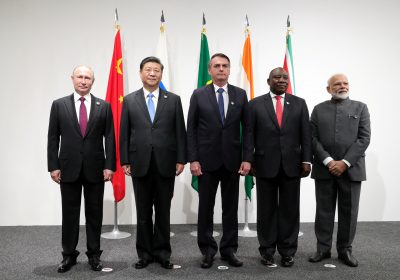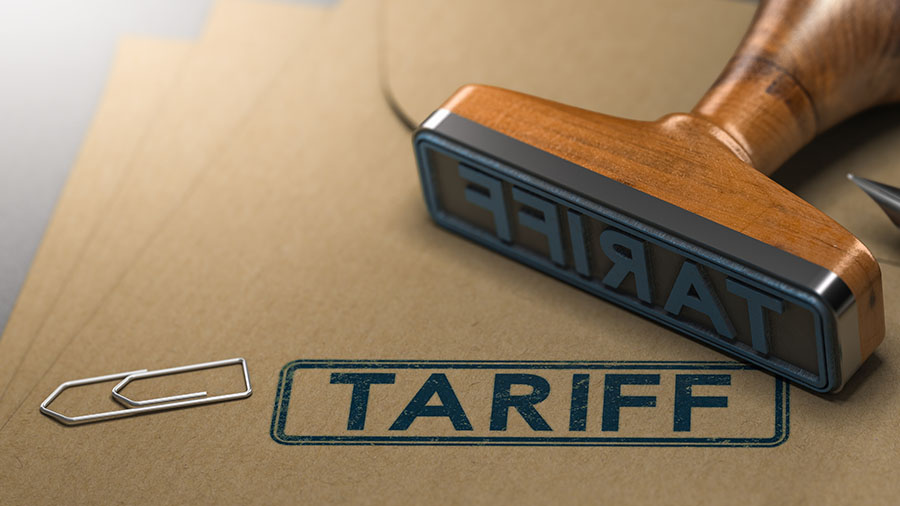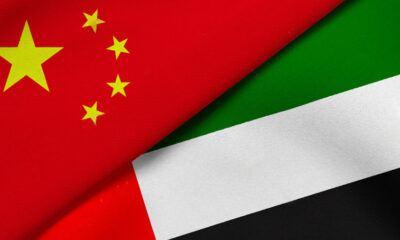China
China’s geostrategic conception of the developing world

Author: Joshua Eisenman, University of Notre Dame
Not since the Mao era has the developing world played a larger role in China’s geostrategy. Over the last decade, China’s leaders have come to believe they can reshape the world to conform with their interests. China is employing economic tools like policy lending and ‘memorandum-of-understanding diplomacy’ to achieve political ends, and stepping up party-to-party outreach and educational activities to deepen relations, improve the image of the country and its political system, and enhance policy coordination.
China’s foreign policy practice differentiates the relative status of bilateral relationships based on the characteristics of partner states — specifically major powers, states on China’s periphery, developing countries and, since the 18th Party Congress in 2012, multilateral international forums. The boundaries between these categories are often ambiguous, and many states traverse two or more of them.
Major powers are large, economically developed states, including the United States, Japan, Russia, Germany, Britain, or the European Union as a whole. Peripheral states include both developing states and major powers in East Asia, Central Asia, South Asia, Russia and Southeast Asia. Former president Hu Jintao declared, ‘Major powers are the key, surrounding (peripheral) areas are the first priority, developing countries are the foundation and multilateral forums are the important stage’.
Under Xi Jinping’s leadership, relations with major powers, especially the United States, remain Beijing’s top priority. But developing states are assuming a larger role in China’s thinking in both political and economic affairs.
In 2013, Xi launched his signature policy, the Belt and Road Initiative (BRI) — an ambitious strategy to reshape the world by loaning over a trillion US dollars to developing states for infrastructure development. The BRI has now expanded to include nearly every aspect of China’s foreign policy toward the developing world. This assertiveness marks a rapid and dramatic departure from more than two decades of adherence to Deng Xiaoping’s admonition that China should ‘keep a low profile’.
Over the last two decades, strategists in China adopted a more nuanced view of the developing world, differentiating ‘major developing states’ or ‘newly emerging powers’ from ‘other’ developing states. While there is no definitive list of major developing states, they appear to include a handful of large, rapidly developing and politically influential states such as the developing members of the G20 — Argentina, Brazil, Mexico, South Africa, India, Indonesia, Saudi Arabia, Turkey, Iran and Thailand.
Part of the developing world falls within China’s ‘periphery’, which constitutes a strategically important geographic belt around China. Previously, the periphery was limited to Northeast Asia, Southeast Asia, South Asia and Central Asia. But under the Xi administration the ‘greater periphery’ expanded in accordance with Beijing’s growing power and influence to include West Asia, the South Pacific and, by some definitions, East Africa.
China’s evolving strategy toward the developing world has mirrored China’s sense of its own identity and place in the world. Beijing now portrays itself as both a developing state and as a major power. Its policies intend to accentuate common interests and promote the emergence of a more ‘democratic’, ‘multipolar’ international order. The claim that China is the largest developing country identifies it with other developing states and insulates Beijing from taking the lead on international issues such as the Syria refugee crisis and climate change.
China is united with developing states on numerous political–economic issues such as environmental priorities and trade-offs, trade policy, technology standards, and the form and function of international institutions. But despite efforts to portray itself as rooted in solidarity with the developing world, the drivers of its policies are primarily domestic, with regime survival as Beijing’s foremost objective.
Domestic priorities are evident in its diplomacy, party-to-party relations, defence of sovereignty norms in international politics, and its near single-minded emphasis on economic development. Improved living standards remain integral to achieving the ‘China Dream,’ which includes achieving a ‘moderately well-off society’ by 2021.
The developing world is also important for Beijing’s efforts to defend…
China
China’s New Tariff Law: Streamlining and Standardizing Current Tariff Regulations

China’s new Tariff Law consolidates import and export duties, clarifies rules for imposing counter-tariffs, and sets a December 1, 2024 effective date. It codifies existing practices on cross-border e-commerce and rules on the origin of goods into law, impacting trade relations.
China’s new Tariff Law consolidates rules on import and export duties that were previously implemented via several legal documents and makes important clarifications and additions to prior regulations. Among other changes, it stipulates provisions for the Chinese government to impose counter-tariffs on imported goods, codifying these powers into law for the first time. We outline all the notable updates to the China Tariff Law and discuss the implications for the country’ current trade relations.
On April 26, 2024, the National People’s Congress (NPC), China’s legislature, adopted the Tariff Law of the People’s Republic of China (the “Tariff Law”) after several rounds of revisions.
The new Tariff Law will replace the Import and Export Tariff Regulations of the People’s Republic of China, which fall under the purview of the State Council, and adopts many of its provisions.
Previously, Chinese law had not stipulated legislative powers to implement countervailing tariffs, although China was nonetheless able to impose counter-tariffs on trade partners through other means.
China’s new Tariff Law comes into effect on December 1, 2024.
China’s Tariff Law elevates several existing provisions and practices to the level of law. For instance, Article 3 of the Tariff Law clarifies the obligations of cross-border e-commerce platforms for tariff withholding and implementing consolidated taxation.
The Tariff Law also solidifies the rules and regulations on the origin of goods, stipulating that the application of tariff rates shall comply with the corresponding rules of origin. Although this has been previously implemented in practice, it is the first time this has been codified into law.
This article is republished from China Briefing. Read the rest of the original article.
China Briefing is written and produced by Dezan Shira & Associates. The practice assists foreign investors into China and has done since 1992 through offices in Beijing, Tianjin, Dalian, Qingdao, Shanghai, Hangzhou, Ningbo, Suzhou, Guangzhou, Dongguan, Zhongshan, Shenzhen, and Hong Kong. Please contact the firm for assistance in China at china@dezshira.com.
China
Outlook on Bilateral Trade and Investment between China and United Arab Emirates (UAE)

The UAE and China have a strong partnership, with the UAE being China’s top trade partner in the Arab world. Both countries collaborate on various sectors like logistics and technology, showcasing mutual commitment to economic growth and global cooperation. High-level trade and investments continue to drive their relationship.
The UAE and China share a robust partnership integral to both countries’ development and foreign policy goals, exemplifying a model of collaboration. Bilateral trade thrives, with the UAE as China’s top trade partner in the Arab world, while investments span key sectors like logistics and technology. This comprehensive strategic partnership continues to evolve, showcasing mutual commitment to economic growth and global cooperation.
The United Arab Emirates (UAE) holds a significant position in China’s trade and commercial connections within the Middle East, particularly in the Arab Gulf region. This partnership is integral to China’s broader strategic initiatives, including the Belt and Road Initiative (BRI), which the UAE actively supports.
Additionally, the UAE plays a crucial role in advancing China’s foreign policy objectives, such as enhancing South-South cooperation, particularly in technical collaboration among developing nations and the Global South in areas like resources and technology.
In this article, we delve into the dynamics of bilateral trade and investment between the UAE and China, exploring the key factors driving their economic relationship and the opportunities it presents for mutual growth and prosperity.
China and the UAE first established their diplomatic relations in 1984. While China has an embassy in Abu Dhabi and a consulate general in Dubai, the UAE has a consulate general in Hong Kong and an embassy in Beijing. China and the UAE have long been close partners, collaborating extensively on economic, political, and cultural fronts.
In 2018, Chinese President Xi Jinping went on a state visit to the UAE, making history as the first Chinese head of state to visit the country in the previous 29 years. The visit was instrumental in lifting bilateral relations to a ‘comprehensive strategic partnership’.
High-level trade has always been the foundation of bilateral ties. Bilateral commerce between China and the UAE reached new heights in 2021, surpassing US$75.6 billion. Additionally, as of 2022, about 6,000 Chinese businesses operate in the UAE, with a sizable Chinese population working primarily in the infrastructure and energy sectors. The UAE is also China’s second-largest economic partner in the Middle East, after Saudi Arabia.
This article is republished from China Briefing. Read the rest of the original article.
China Briefing is written and produced by Dezan Shira & Associates. The practice assists foreign investors into China and has done since 1992 through offices in Beijing, Tianjin, Dalian, Qingdao, Shanghai, Hangzhou, Ningbo, Suzhou, Guangzhou, Dongguan, Zhongshan, Shenzhen, and Hong Kong. Please contact the firm for assistance in China at china@dezshira.com.
China
2024 Tax Incentives for Manufacturing Companies in China

China offers various tax incentives to boost the manufacturing industry. The Ministry of Finance and State Tax Administration provide guidelines on eligibility and policies. VAT exemptions and refunds are available for companies producing specific goods or services, with a monthly refund option for deferred taxes.
China implements a wide range of preferential tax policies to encourage the development of the country’s manufacturing industry. We summarize some of the main manufacturing tax incentives in China and explain the basic eligibility requirements that companies must meet to enjoy them.
China’s Ministry of Finance (MOF) and State Tax Administration (STA) have released guidelines on the main preferential tax and fee policies available to the manufacturing industry in China. The guidelines consolidate the main preferential policies currently in force and explain the main eligibility requirements to enjoy them.
To further assist companies in identifying the preferential policies available to them, we have outlined some of the main policies currently available in the manufacturing industry, including links to further resources.
For instance, VAT is exempted for:
Companies providing the following products and services can enjoy immediate VAT refunds:
Companies in the manufacturing industry that meet the conditions for deferring tax refunds can enjoy a VAT credit refund policy. The policy allows companies to receive the accumulated deferred tax amount every month and the remaining deferred tax amount in a lump sum.
The policy is not exclusive to the manufacturing industry and is also available to companies in scientific research and technical services, utilities production and supply, software and IT services, and many more.
This article is republished from China Briefing. Read the rest of the original article.
China Briefing is written and produced by Dezan Shira & Associates. The practice assists foreign investors into China and has done since 1992 through offices in Beijing, Tianjin, Dalian, Qingdao, Shanghai, Hangzhou, Ningbo, Suzhou, Guangzhou, Dongguan, Zhongshan, Shenzhen, and Hong Kong. Please contact the firm for assistance in China at china@dezshira.com.






